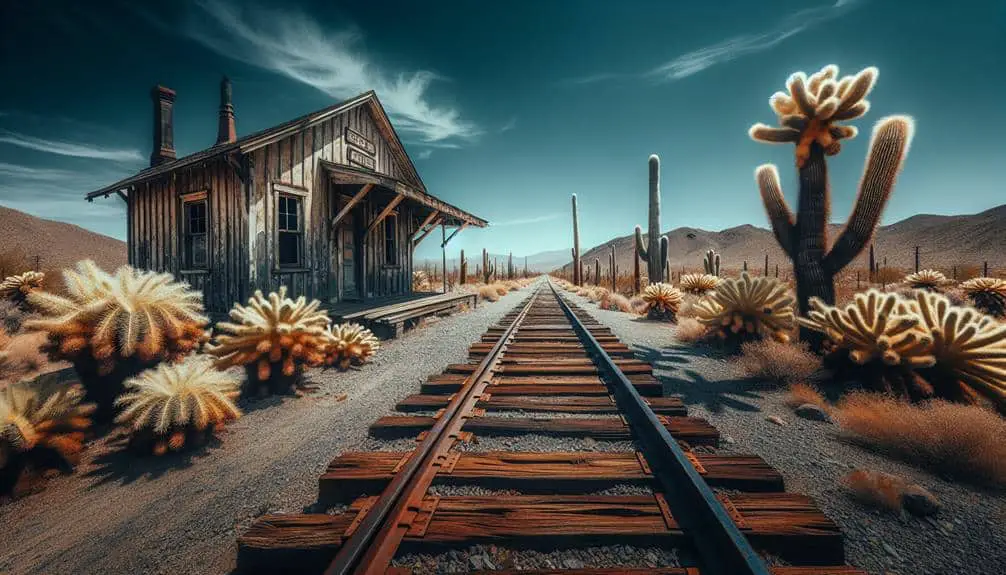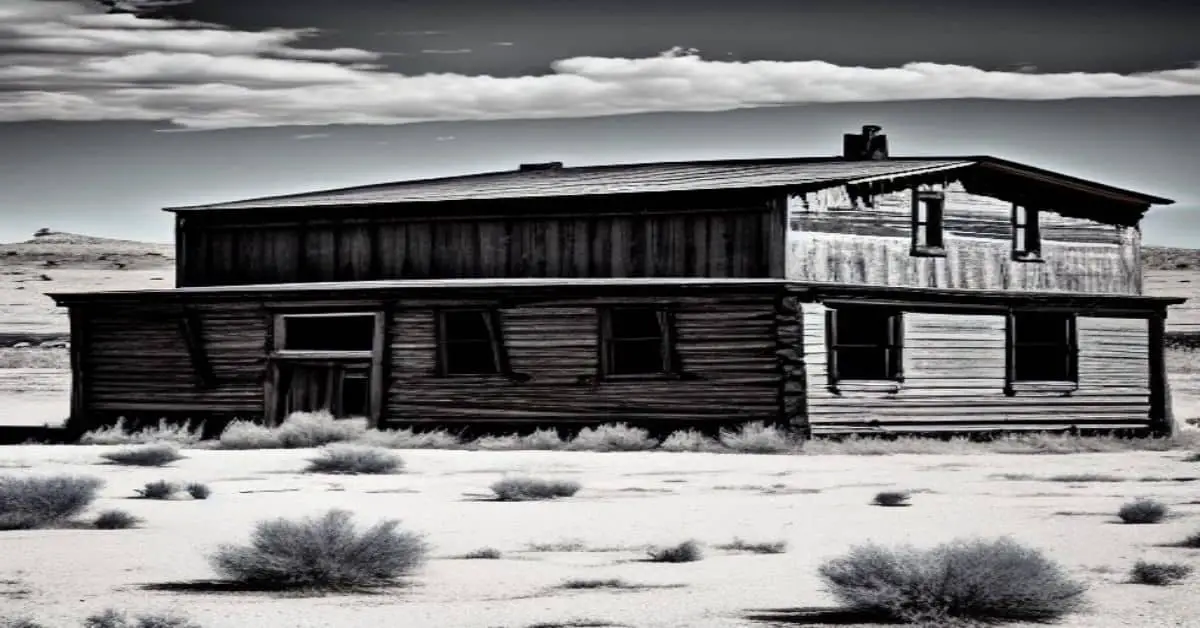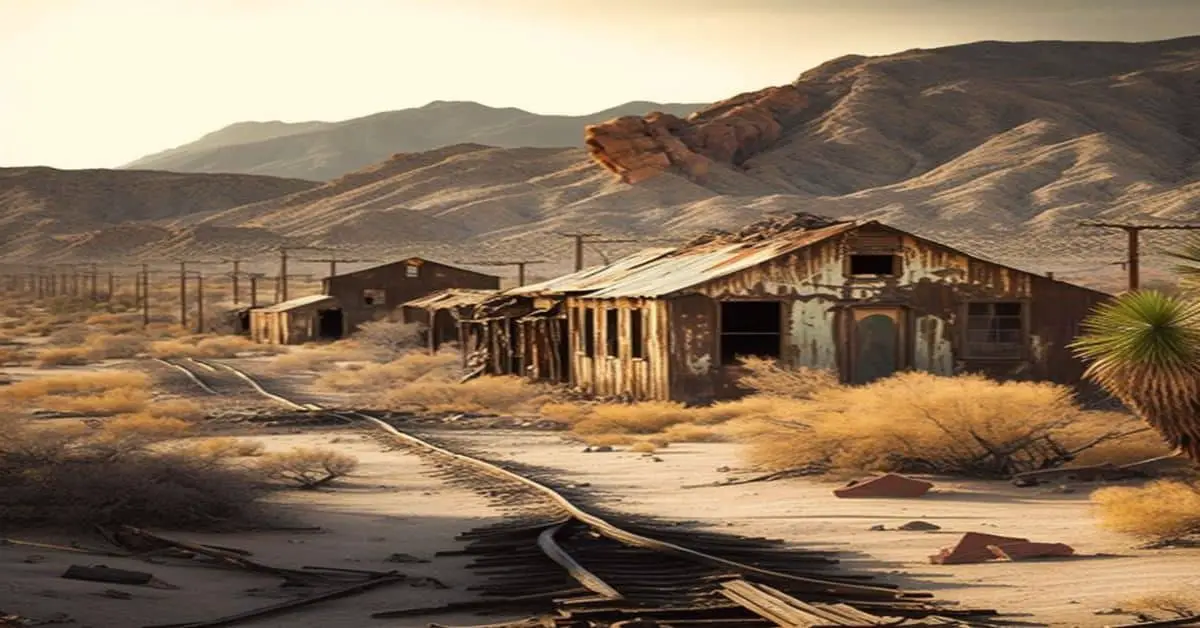In Arizona, railroad settlements became deserted ghost towns due to environmental degradation, harsh climate, and dwindling economic opportunities. The once prosperous communities faced challenges like soil erosion, water scarcity, and population decline, leading to their abandonment. The economic downturn caused businesses to close, jobs to vanish, and residents to leave, exacerbating the decline. While these ghost towns now stand as eerie reminders of the past, they also hold unique history and tales waiting to be discovered further.
Key Points
- Environmental degradation, harsh climate, and unsustainable practices led to desertion.
- Decline in economic opportunities caused population exodus from railroad settlements.
- Economic changes, downturn, and job loss contributed to the abandonment of settlements.
- Abandoned railroad communities in Arizona turned into ghost towns due to dwindling economy.
- Exodus of residents and closure of businesses turned thriving settlements into deserted ghost towns.
History of Railroad Communities in Arizona
Examining the development and decline of railroad communities in Arizona reveals a complex interplay of economic, social, and environmental factors. The development patterns of these settlements were heavily influenced by the construction of railroads, with towns springing up along the tracks to support the burgeoning transportation industry. Social dynamics played a pivotal role in shaping these communities, with diverse groups of people coming together to live and work in these areas. The influx of workers, often from different backgrounds, led to a unique blend of cultures within these settlements.
As the railroad industry evolved and changed, so did the fortunes of these communities. Economic shifts, such as the decline of rail transport or the rise of alternative modes of transportation, could spell doom for these once-thriving towns. Social dynamics also played a part, with changing demographics and social structures impacting the cohesion of these communities. Understanding the development patterns and social dynamics of Arizona's railroad settlements is key to unraveling the mysteries behind their eventual desertion.
Factors Leading to Desertion
Environmental degradation played a significant role in the abandonment of these once-thriving communities. The harsh desert climate, coupled with unsustainable resource extraction practices, led to soil erosion, water scarcity, and overall environmental deterioration. As a result, the land became less viable for agriculture and habitation, forcing residents to seek greener pastures elsewhere.
Population decline also contributed to the desertion of Arizona's railroad settlements. The initial boom in population driven by the railroad construction and mining activities wasn't sustainable in the long run. As economic opportunities dwindled and environmental conditions worsened, people started to leave in search of better prospects. The exodus of residents further exacerbated the decline of these settlements, ultimately turning them into ghost towns.
Impact of Economic Changes
The economic changes that unfolded in Arizona's railroad settlements had a substantial influence on the trajectory of their development and eventual desertion. During the late 19th and early 20th centuries, these settlements thrived as essential hubs for trade, commerce, and transportation. However, as the region experienced an economic downturn, marked by shifts in industries and trade routes, the prosperity of these settlements declined rapidly. The once bustling towns faced challenges as businesses closed, jobs diminished, and opportunities dwindled.
Consequently, the economic hardships led to a significant population decline in these settlements. Many residents left in search of better prospects elsewhere, resulting in a mass exodus that further exacerbated the dwindling economy. With fewer inhabitants to sustain the local businesses and infrastructure, the settlements struggled to survive. As a result, what were once vibrant communities gradually transformed into deserted ghost towns, reminiscent of a bygone era when economic changes reshaped the landscape of Arizona's railroad settlements.
Ghost Town Attractions in Arizona
Uncover the enchanting allure of Arizona's ghost town attractions, where history and mystery intertwine to create a distinctive visitor experience. Arizona boasts a plethora of abandoned mining towns and Wild West settlements that have been preserved as ghost town attractions. These ghost towns offer a fascinating glimpse into the past, with their dilapidated buildings and dusty streets evoking a sense of nostalgia for a bygone era. Visitors can explore the remnants of once-thriving communities, imagining what life was like during the peak of the mining boom.
Paranormal tourism has also gained popularity in Arizona's ghost towns, with enthusiasts seeking out haunted locations and supernatural encounters. The eerie atmosphere of these abandoned buildings adds an extra layer of intrigue for those fascinated by the unknown. From Jerome to Tombstone, each ghost town has its own unique history and ghostly tales waiting to be uncovered.
Whether you're a history buff, a fan of the paranormal, or simply seeking a unique adventure, Arizona's ghost town attractions offer a compelling journey into the past.
Preservation Efforts and Challenges
Exploring the deserted settlements of Arizona's ghost towns reveals the ongoing efforts and obstacles faced in preserving these historical sites. Preserving these sites is essential to maintaining Arizona's rich history and heritage. However, numerous challenges impede these preservation initiatives:
- Funding: Securing financial resources for maintenance, restoration, and public access is a persistent challenge.
- Environmental Factors: Harsh weather conditions and natural disasters threaten the structural integrity of the buildings.
- Lack of Awareness: Limited public knowledge about the importance of these sites hinders conservation efforts.
- Regulatory Obstacles: Navigating complex regulations and obtaining permits for restoration work can be time-consuming and costly.
Despite these challenges, various initiatives are underway to safeguard Arizona's ghost towns for future generations. Collaborative efforts between historical societies, government agencies, and local communities play a crucial role in overcoming these obstacles and ensuring the preservation of these significant historical landmarks.
Frequently Asked Questions
How Did the Construction of Railroads in Arizona Impact the Local Indigenous Communities?
The construction of railroads in Arizona profoundly impacted local indigenous communities by disrupting their traditional lands and cultural heritage. This led to displacement, loss of resources, and a shift in their way of life.
What Role Did the Federal Government Play in the Development and Eventual Abandonment of Railroad Settlements in Arizona?
The federal government, through various policies and interventions, greatly influenced the development and eventual abandonment of railroad settlements in Arizona. Its actions shaped local economies, impacting the growth and decline of these communities.
Are There Any Known Paranormal Activities or Ghost Sightings Reported in These Deserted Railroad Towns?
In these deserted railroad towns, stories of paranormal sightings and urban legends abound. Locals share chilling tales of ghostly apparitions wandering the empty streets, adding an eerie layer to the abandoned settlements' mysterious allure.
What Efforts Have Been Made to Repurpose or Revitalize These Ghost Towns for Modern Use?
To repurpose Arizona's deserted railroad towns, various community engagement initiatives have been undertaken. Local groups collaborate on revitalization projects, such as converting old buildings into museums or art spaces, aiming to breathe new life into these historic locations.
Are There Any Significant Environmental Concerns Related to the Abandonment of These Railroad Settlements in Arizona?
You might wonder about the significant environmental impact left by abandoned railroad settlements in Arizona. Preservation efforts face challenges like soil erosion and wildlife disruption. Balancing history and conservation remains important for these areas.



